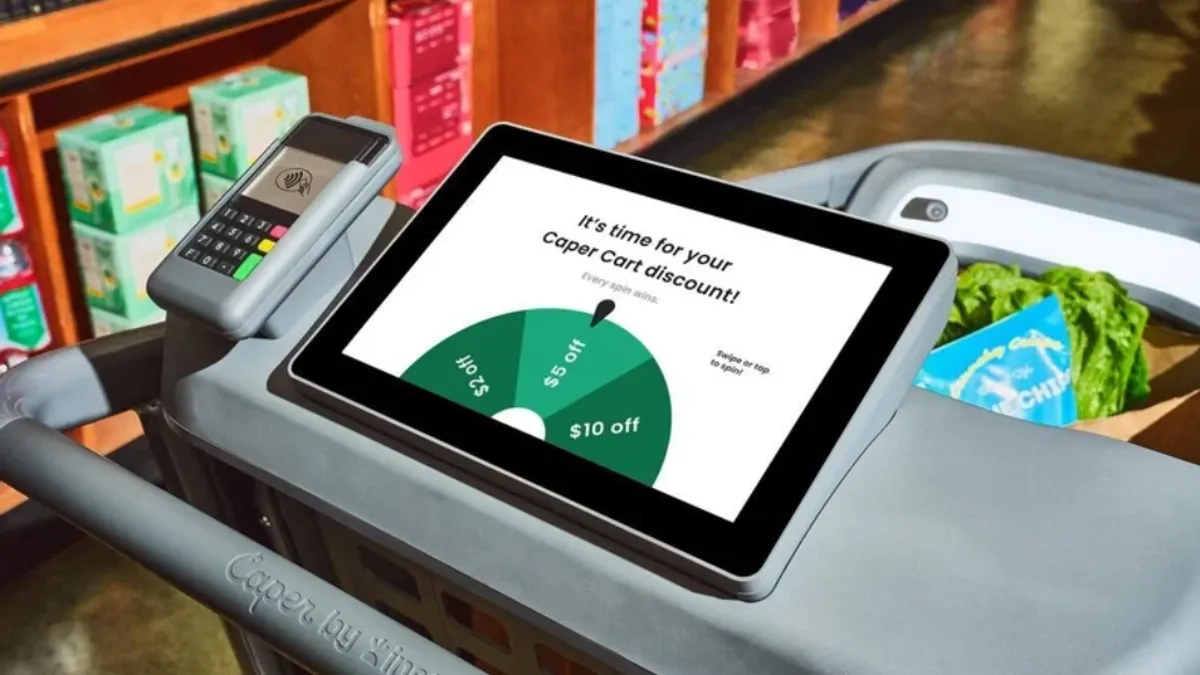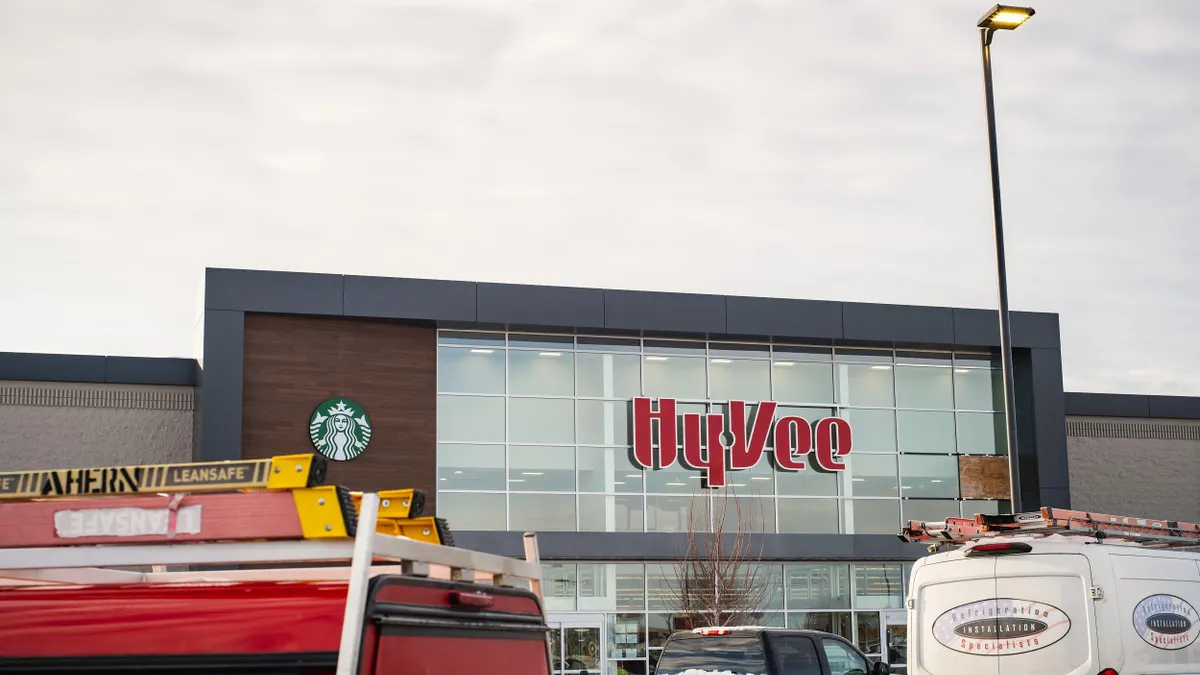Comparisons between Amazon and Walmart — the two industry juggernauts that arguably have been the most instrumental in defining retail itself — are inevitable. That juxtaposition is made difficult not only by the two companies' differences, beginning with their ages and sizes, but also by the changing definition of e-commerce.
That's not stopping observers from making them. Or trying to predict when Amazon might catch up to Walmart in some ways, or when Walmart might catch up to Amazon in others. Even Walmart compares itself to Amazon, under pressure from investors to demonstrate that it has the same prowess online as off. But as e-commerce continues to evolve, Walmart's major advantage could be the very thing that seemed like a disadvantage just a few years ago: its formidable brick-and-mortar footprint.
Or is it?
Who is the retail king?
Walmart, by traditional measures, reigns supreme. The company last year brought in $500.3 billion, a 3% year-over-year increase, as e-commerce sales grew 44%. Operating income for the year was $20.4 billion, a 10.2% decrease. Compare that to Amazon's net sales last year, which rose 31% to $177.9 billion, up from $136 billion in 2016.
And, though Amazon enjoys a sticky base thanks to its Prime membership, which stands at 100 million worldwide, Walmart sells to many more people. In 2018, 64% of U.S. adults (about 162 million) said they shopped at Walmart in the past three months, according to a report from market research firm Packaged Facts emailed to Retail Dive. Walmart itself says that 90% of Americans live within 10 miles of a Walmart store, Packaged Facts noted.
"Amazon maintains a wide online purchasing lead over the competition, but Walmart — for the moment — is shoulders above the e-tail giant when all aspects of retailing are considered," according to Packaged Facts' report.
Stores may be key to its e-commerce success, according to the report, which it has been chasing ambitiously of late. Until it acquired e-commerce startup Jet (and Jet founder Marc Lore) in 2016, Walmart had more or less left its e-commerce operations to drift. Since that acquisition, however, the retailer has been doing what many analysts love to see in an era when Amazon dominates headlines — making dramatic changes to prove its mettle against the e-commerce giant. Citi Research analysts, for example, earlier this year raised their rating for Walmart from neutral to buy in light of the retail giant's rising e-commerce sales, which they said prove the company can compete with Amazon.
Those changes include Walmart's purchase last year of online outdoor retailer Moosejaw for $51 million in cash, of vintage-inspired online women's apparel site Modcloth and menswear site Bonobos for $310 million, its online tie-up with upscale department store Lord & Taylor, major revamps of its website and marketplace, home delivery and prominent in-store pickup of online orders across most of its footprint.
Indeed, for the first time Walmart on Monday created a dedicated online page dubbed "The Premium Outdoor Store," curated by one of its those specialty pure-plays, Moosejaw. The page offers merchandise from top outdoor brands, including Craghoppers, Deuter, First Ascent by Eddie Bauer and others, plus Moosejaw-branded clothing. It is an effort to introduce "a completely new, outdoor specialty assortment that hasn't been available to Walmart customers in the past," according to a Walmart blog post.
It's sign of Walmart's online ambitions, which still face stiff competition. While Walmart remains the largest retailer in the U.S., its reign may end in 2022, at which time Packaged Facts forecasts that Amazon will surpass it, based on its assumption that Amazon sales will continue to grow faster. “The lingering question has now become, 'how much longer can Walmart continue to stay ahead of Amazon?'" Packaged Facts Research Director David Sprinkle said in a statement. "A change is coming sooner than most might anticipate.”
What is 'e-commerce'?
But that may depend on how e-commerce evolves, too. While online sales were once dominated by pure-play retailers, that has swiftly changed as more legacy retailers sell online and more pure-plays open physical stores.
Packaged Facts expects pure-play digital sales to rise an average 18% from 2016 to $441 billion in 2020, and omnichannel e-commerce sales to rise an average 13% in that period to $176 billion in 2020
That puts Amazon at a decided disadvantage, given that its physical footprint is dominated by its Whole Foods chain and especially when considering that more than a third (35%) of online purchasers surveyed report that they have clicked and collected (ordered product/service online and picked it up at a store) in the last three months, according to Packaged Facts.
But Amazon's disadvantage — its digital essence — may well be its advantage. That is, its sales from services, not least its dominant web services unit, AWS, supports its retail enterprise, something no other retailer can claim. While many observers, including Packaged Facts, use Amazon's $178 billion in sales last year as the e-commerce benchmark for other retailers to use, most of those sales aren't what is commonly thought of as retail at all.
Rather, only $79 billion of Amazon's total sales was attributable to U.S. retail sales, according to retail real estate consulting firm Siteworks. "That means that $100 billion is from non U.S. retail sales or from other sources like Amazon Web Services," Siteworks retail analyst Nick Egelanian told Retail Dive in an email. "Of that, reports vary widely on what percent comes from the 'Marketplace.' I break it into three classes — pure retail, fulfillment and the Marketplace. My best guess is that Amazon's retail is about $40 billion, fulfillment is about $20 billion and the Marketplace is about $20 billion."
And then there are profits
While Amazon's sales are only partly in retail, its profits are decidedly not from retail. That comes largely from how expensive it is to conduct retail sales online.
Amazon's shipping costs in 2017 grew 31% year over year, while in other quarters they outpaced sales. And now Walmart, as it chases sales online, is also bumping up against the high costs of e-commerce and fierce online price competition. Walmart in its most recent quarter blew away sales expectations thanks to its runaway e-commerce growth, but, uncharacteristically for the retail giant, arguably the world's most efficient distributor of retail goods, it suffered when it came to profits in the second quarter.
"In terms of profit, this has been a quarter that Walmart would rather forget," GlobalData Retail Managing Director Neil Saunders told Retail Dive in an email, though he also deemed "the erosion of profitability and margins ... necessary evils."
The retail giant's decline in operating profit is especially problematic because it reflects ongoing pressures from investing in lower prices, customer service, digital infrastructure and store refurbishments, as well as increased labor and transportation costs, he said, warning, "These pressures are unlikely to dissipate as the year progresses."
As Walmart upends its essential retail model chasing growth online, it could be morphing into quite a different retailer, and even its stores could see weaker performance. For one thing, the company has slowed its brick-and-mortar growth, despite the fact that some $350 billion of its overall sales are from its physical U.S. stores, according to Siteworks.
"I have my strong doubts about this strategy, long-term, as I doubt they will make money on their internet investment," Egelanian warned. "However right now, perception is reality."






















